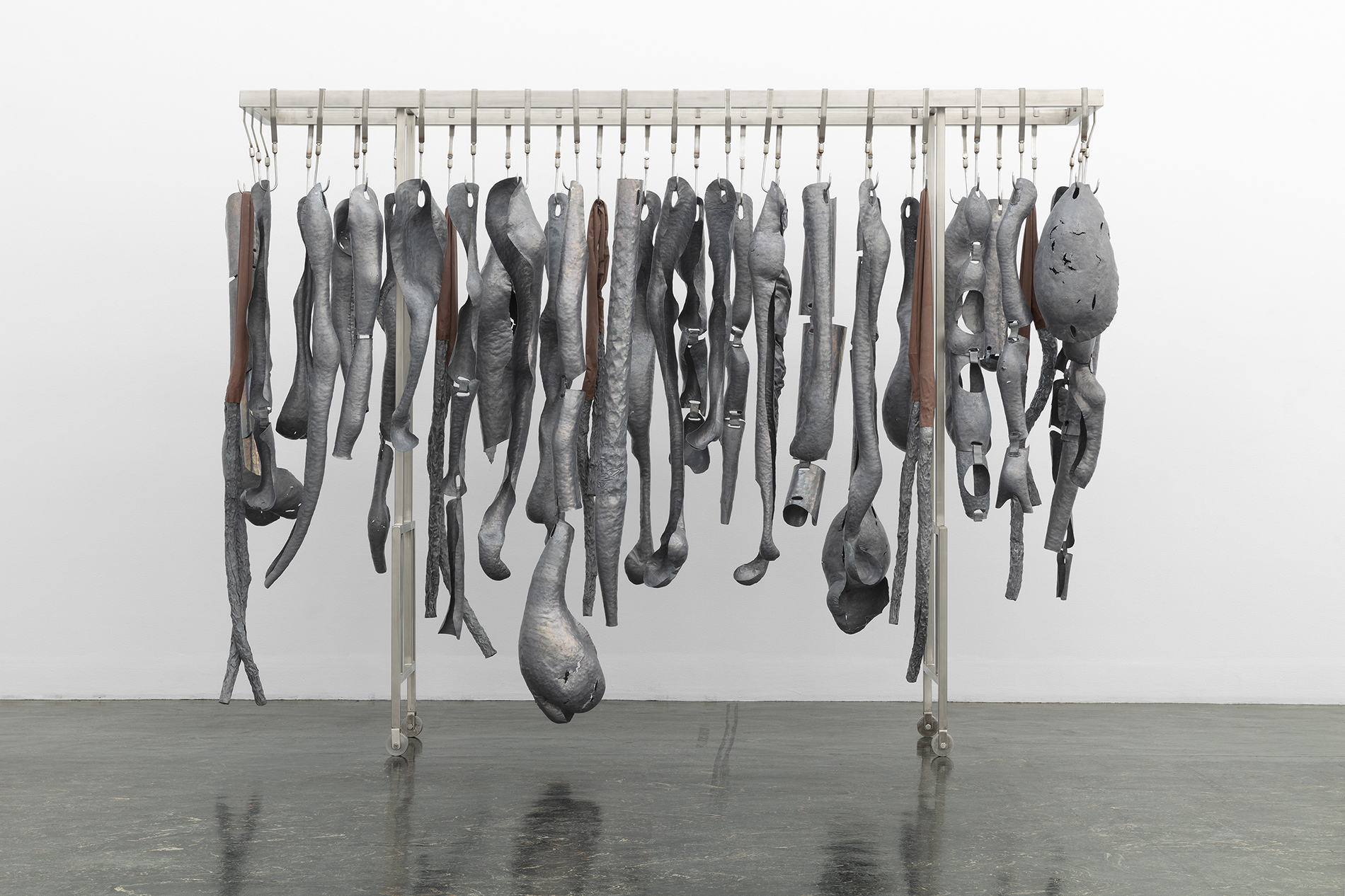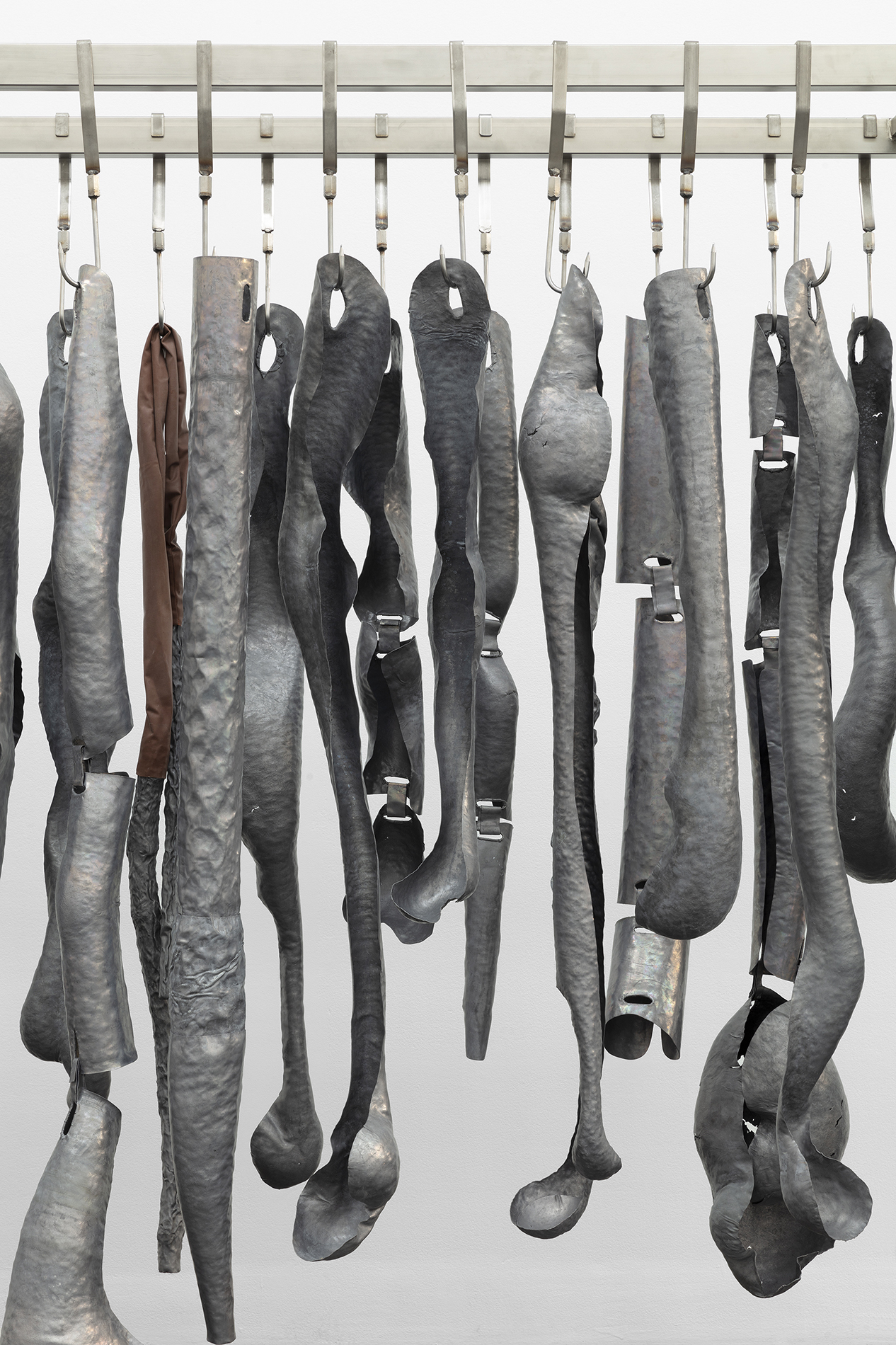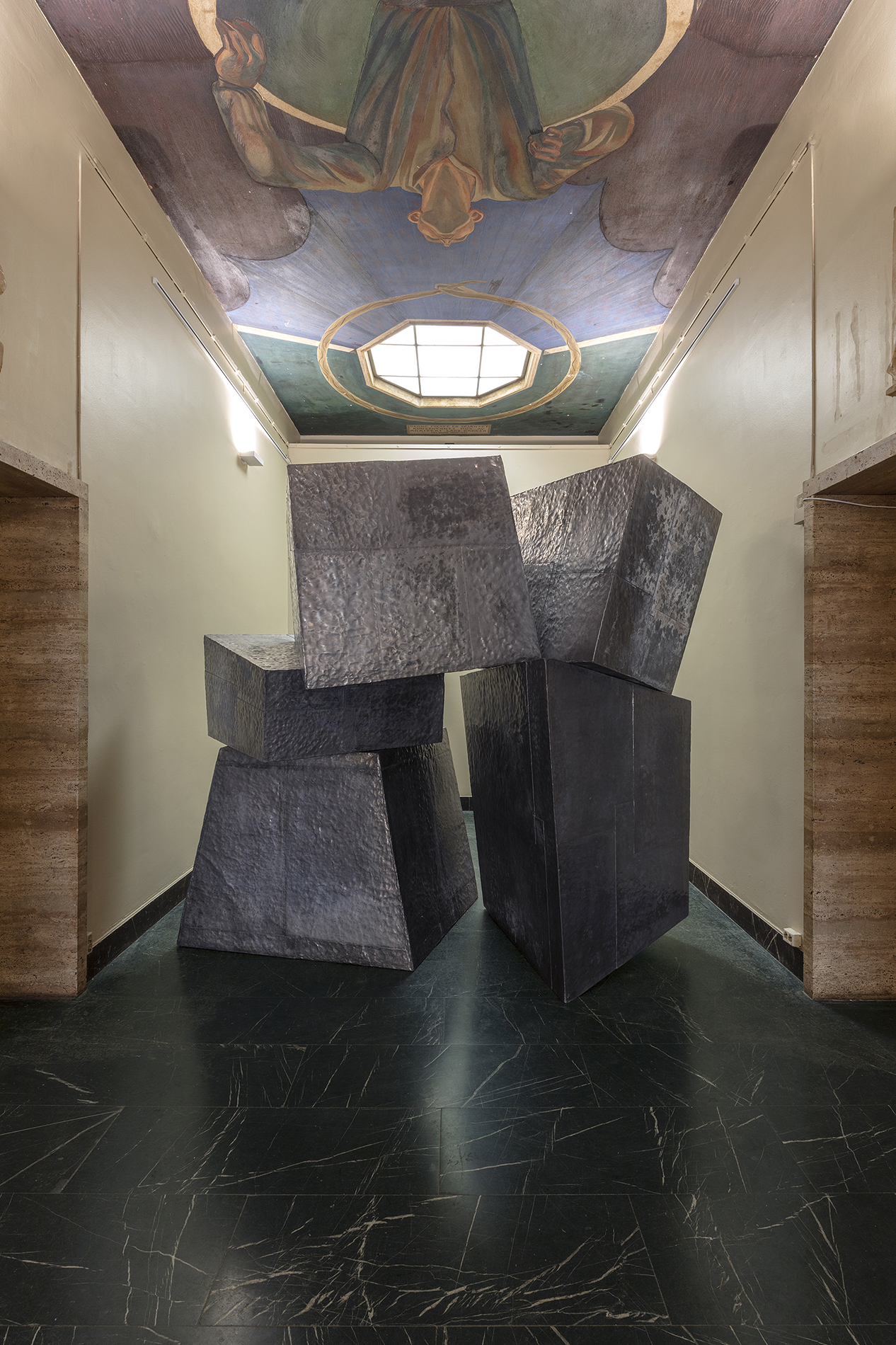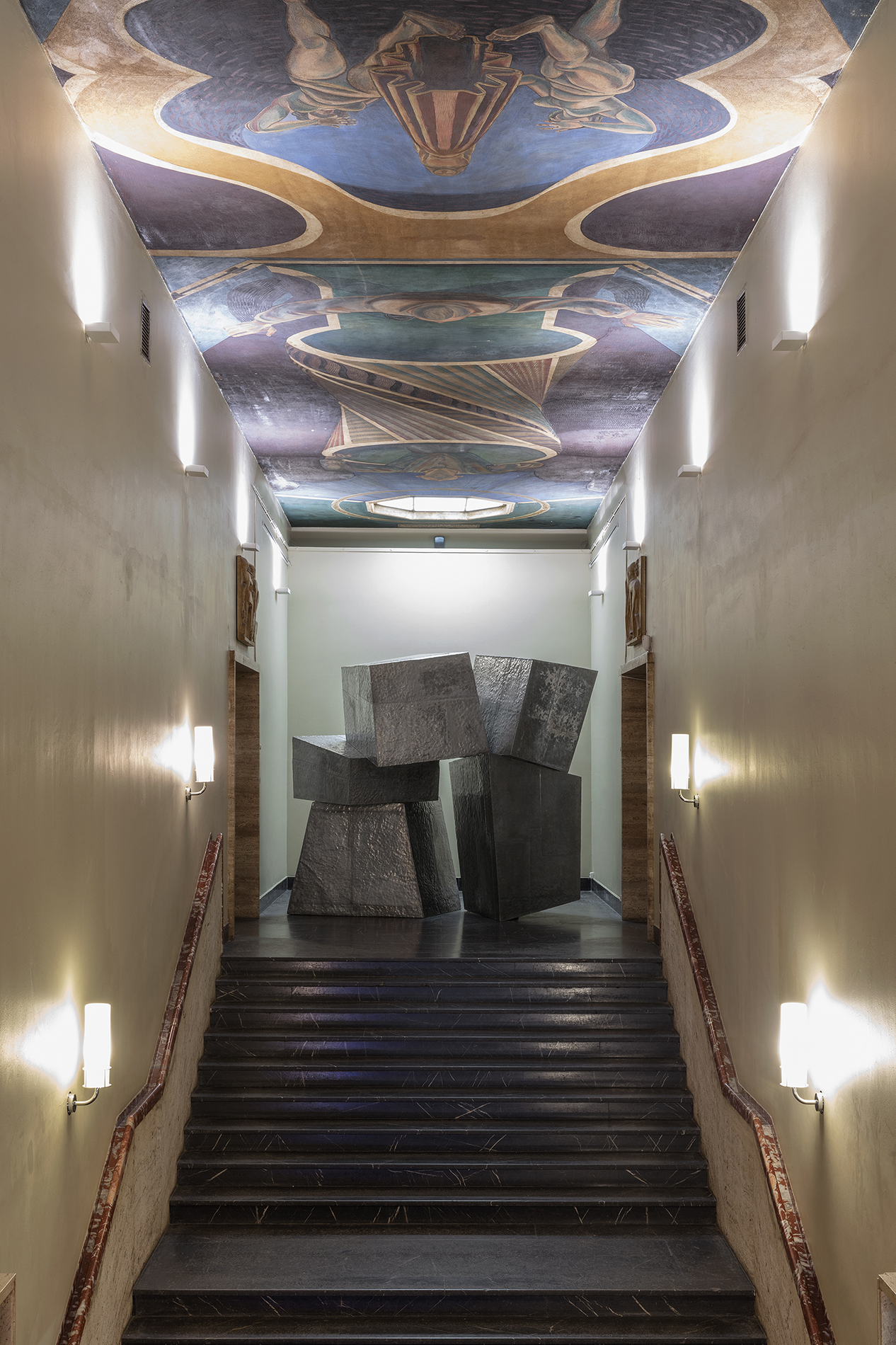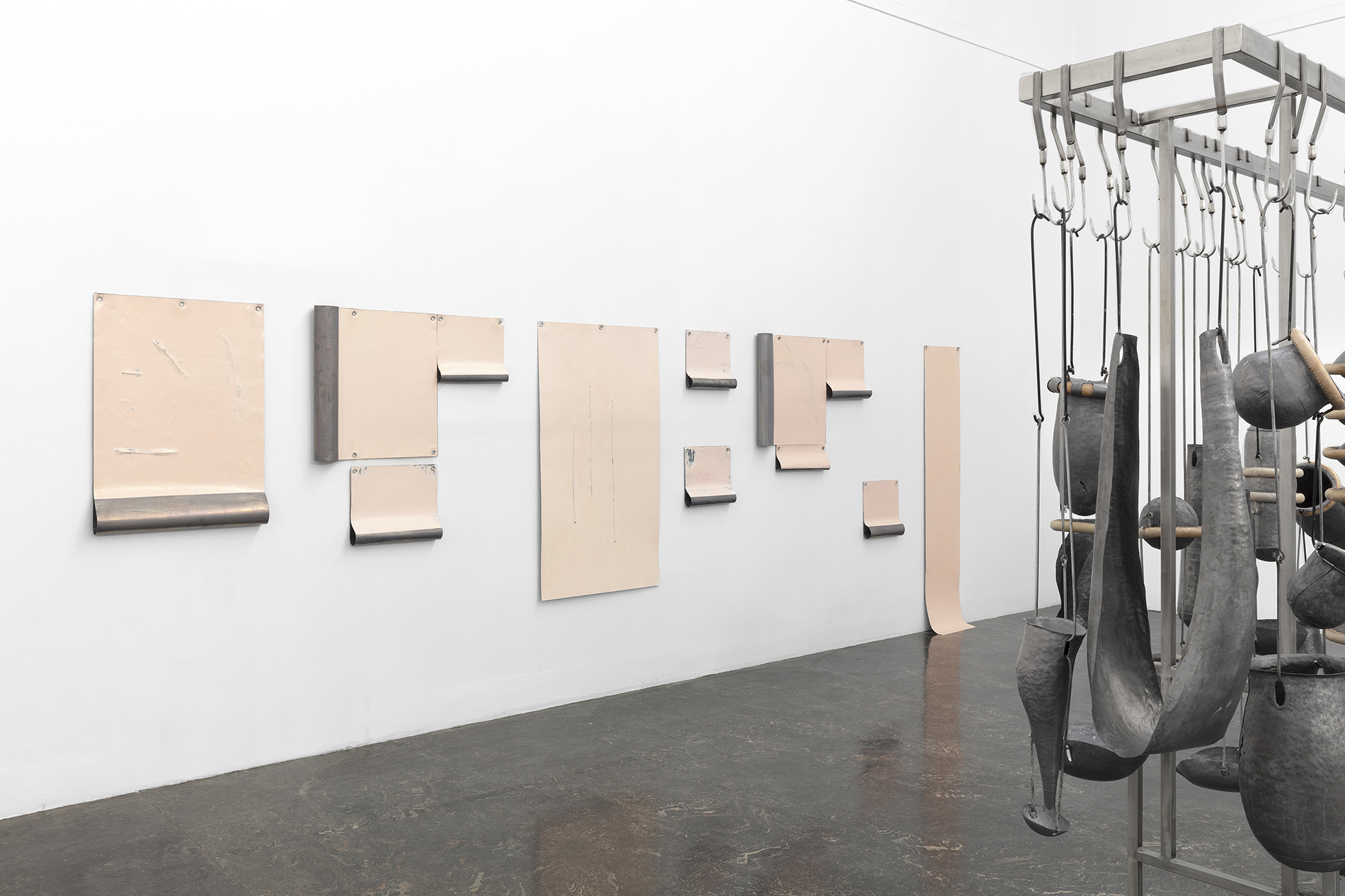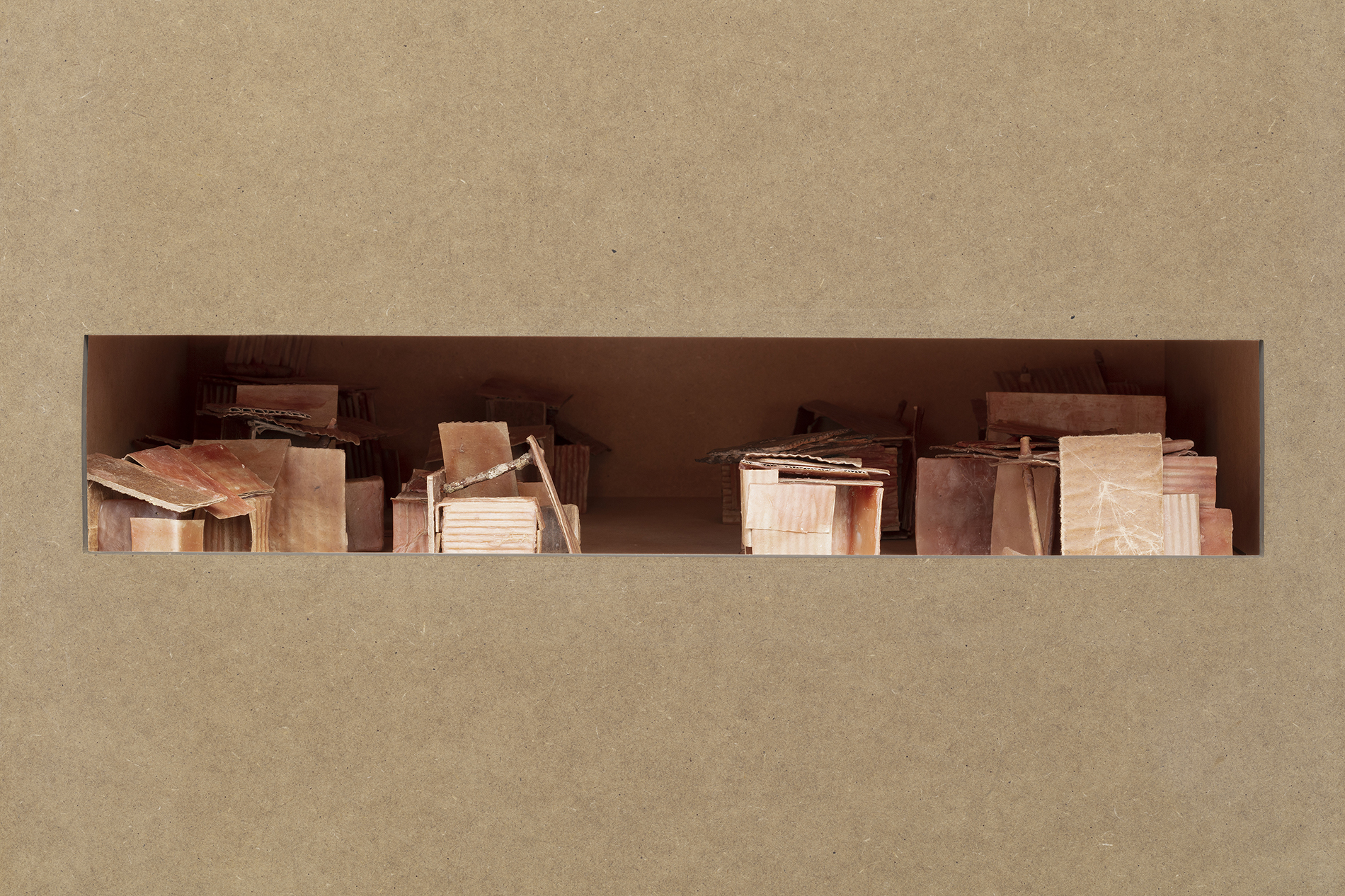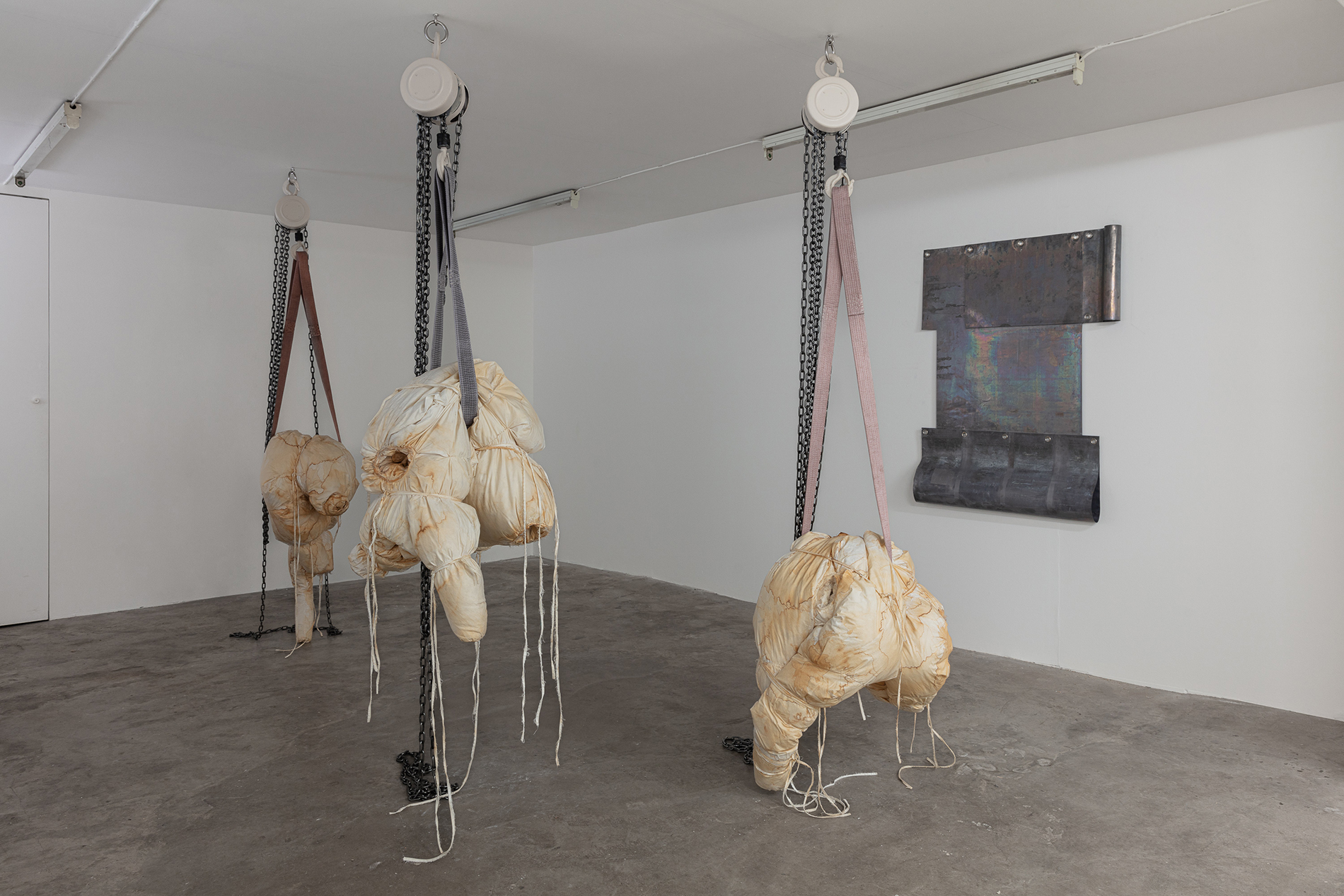Horses Die Standing
In Horses Die Standing, Hanne Tyrmi explores the vulnerability that characterizes both society and the individual, an experience of barriers and loss, power and powerlessness. Tyrmi uses ideas of the body – as social and political reality – as a pivotal point in her work.
The extensive use of lead forms an expressive dramaturgy through the halls, as stages in a life cycle. The lead is folded, stacked, bent and stretched. Lead is soft and enveloping, impenetrable and toxic all at the same time. The first work on view is positioned on top of the stairwell, where lead-clad boulders pile up. A giant installation of lead-clad tree trunks hangs from chains in the ceiling in one hall, while an extensive collection of lead objects hangs from hooks on mobile steel racks in the other. There is a sense of precariousness and fragility around the large lead objects hanging in the space, with a potential for movement a constant presence. A poignant contrast is presented in the lower exhibition hall, with its monumental, closed lead curtain limiting the visitor’s movements.
The exhibition was curated by Kunstnernes Hus’ senior curator Ida Kierulf and is followed by a public programme and a Minigraph publication containing an introduction by Kierulf, a conversation between Hanne Tyrmi and art historian and critic Line Ulekleiv, as well as an essay by art historian and writer Marit Paasche. The exhibition was opened by Kari Veiteberg, Bishop in Oslo. (Bishop’s opening speech)
A large work produced for the exhibition, entitled Ten ways to stop your tears (2021), has been included in the collection of the National Museum of Art, Architecture and Design of Norway.
Title
Horses Die StandingVenue
Exhibition Kunstnernes Hus (Oslo,Norway)Date
2022Van Etten
In dialogue with the exhibition at Kunstnernes Hus, the artist-run exhibition Van Etten showed the exhibition Confessions with Hanne Tyrmi. In contrast to Tyrmi’s monumental work at Kunstnernes Hus, an installation of patinated duvets will create a different and more intimate atmosphere in the gallery room.
Photos: Vegard Kleven
Reviews















